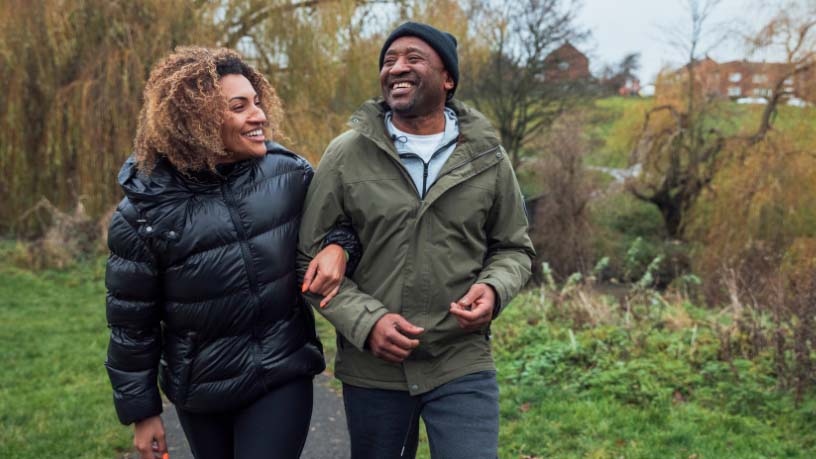Your knees are among your body’s hardest working joints, making them vulnerable to pain.
On this page
Key takeaways
Various factors, from age to athletics, can put you at a heightened risk of knee-related injuries.
Find out how to treat or prevent knee injuries.
Knee pain affects people of all ages, and it can be caused by an injury or a medical condition like arthritis.
Here, we explore the basics of knee pain, including potential causes, treatments and areas of damage.
Understanding your knees
Your knees are hard-working joints that are made of many parts. Each joint consists of 3 bones:
- thigh bone (femur)
- shin bone (tibia)
- kneecap (patella).
These bones are held in their correct position by tough fibrous bands called ligaments. Because they’re covered by slippery cartilage, the bones are able to glide smoothly over each other. Cartilage between your thigh and shin bone (menisci) also help absorb shock and distribute weight.
The knee joint is moved by various leg muscles that are attached to the knee bones by tendons.
Compared to your hip or shoulder, your knee has a limited range of motion. You can straighten or bend it. It’s also a weight-bearing joint, meaning it helps keep you upright.
As the largest joint in your body, your knee is also one of the most susceptible to injury, making it a prime candidate for pain.1
Risk factors for knee pain
As well as older age, numerous things can cause knee pain. Common risk factors include:
- low muscle flexibility or strength
- being overweight or obese
- regularly doing sports or work activities that put strain on your knees
- previous injuries or conditions.2
Causes of knee pain
Knee damage can come in the form of:
- torn cartilage or ligaments
- overstretched ligaments
- fractured bones
- a dislocated kneecap
- a minor ligament sprain (due to twisting awkwardly).
Several conditions are linked to knee pain, but it’s generally caused by damage from a sports injury, from overusing it during exercise or work, or from aging.
Osteoarthritis occurs when the menisci in the knee become worn and rough over time due to wear and tear or overuse.
Chronic conditions such as gout and rheumatoid arthritis can also affect your knee. Likewise, inflammation-based issues like bursitis and tendonitis, plus infections like septic arthritis, can lead to knee pain.
Sometimes, knee pain is a result of problems in other parts of your body, such as pain originating in your hips or spine.
Types of knee pain
While you can experience pain in multiple parts of your knee at the same time (such as following a meniscus tear), more localised knee pain is usually experienced in one of the following areas:
- front knee pain. Also known as ‘anterior’ knee pain, this is pain experienced in and around the kneecap. It can be the result conditions like patella tendinopathy and bursitis
- back knee pain. Also known as ‘posterior’ knee pain, this pain behind your knee is caused by popliteal cysts (also known as Baker's cysts), a built-up of excess fluid
- inner knee pain. Also known as ‘medial’ knee pain, this pain occurs over or just below your knee’s inner-leg side. It’s associated with conditions like medial collateral ligament (MCL) injury and medial plica syndrome
- outer knee pain. Also known as ‘lateral’ knee pain, this pain occurs around the outside of your knee or up to your thigh. This is typically the result of iliotibial band syndrome or a lateral collateral ligament (LCL) injury.
When to see a doctor
See your doctor about your knee pain if:
- you can’t put weight on the affected leg
- you have severe pain, even when not bearing weight
- your knee gives way, clicks or locks
- your knee is deformed or misshapen
- your knee is hot, red or very swollen
- you have pain, swelling, numbness, tingling or a bluish discoloration in your calf (which may indicate deep vein thrombosis and require urgent attention)
- you’re still in pain 3 days after the pain started or you have a fever from it.
Diagnosing knee pain
As well as examining your symptoms and medical history, your doctor may suggest an X-ray, MRI scan or blood test to determine your knee problem.
If you have cartilage or ligament damage, your doctor may suggest a procedure known as an arthroscopy (often referred to as ‘keyhole surgery’) to look inside and potentially repair your knee.
Bupa Health Programs
Discover our programs designed to help you recover and stay out of hospital where you can.
Managing knee pain
Your treatment will depend on your specific condition and symptoms. However, for mild pain or injuries, you may simply need to:
- ice the affected area
- rest your leg
- take anti-inflammatory painkillers such as ibuprofen.
You can also help prevent future knee pain by making a few lifestyle and exercise modifications. These might include:
- losing excess weight
- varying the type of sport or exercise you do
- warming up and cooling down properly
- strengthening your core muscles (back and abdominal), hamstrings, thighs and kneecaps
- using gym equipment correctly
- wearing well-fitting sports shoes
- gradually as opposed to suddenly increasing exercise intensity.
Feet that naturally turn in or out when you walk or run can cause or aggravate knee pain.3 So, seeing a podiatrist may also help.
Resources
The Australian Physiotherapy Association can help you find a physio near you.
Chronic Pain Australia provides education and support for those living with chronic pain.
Musculoskeletal Health Australia provides information and support for people living with arthritis and musculoskeletal conditions. Visit their website or call them on 1800 263 265.

At Bupa, trust is everything
Our health and wellbeing information is regularly reviewed and maintained by a team of healthcare experts, to ensure its relevancy and accuracy. Everyone's health journey is unique and health outcomes vary from person to person.
This content is not a replacement for personalised and specific medical, healthcare, or other professional advice. If you have concerns about your health, see your doctor or other health professional.
1 OrthoInfo. (2022). Common Knee Injuries. American Academy of Orthopaedic Surgeons.
2 Mayo Clinic. (2023). Knee pain. Mayo Clinic.
3 Cui, W., Wang, C., Chen, W,. Guo, Y., Jia, Y., Du, W,. & Wang, C. (2019). Effects of Toe-Out and Toe-In Gaits on Lower-Extremity Kinematics, Dynamics, and Electromyography. Applied Sciences, 9(23), 5,245.
You might also like...
Rheumatoid arthritis: An overview
Rheumatoid arthritis is a chronic autoimmune condition that can lead to stiff, swollen and inflamed joints. Learn about the symptoms, causes and treatments.
Osteoarthritis
The most common arthritis in Australia, osteoarthritis develops over time and can result in painful joints. Find out how this condition might affect you.
7 things I wish I knew before knee surgery
Knee surgery is a major operation that may require months of intensive recovery. Discover 7 common insights from those who’ve done it.
5 best exercises to strengthen your knee after surgery
If you’ve had knee surgery, support your recovery with these 5 physiotherapist-approved exercises. Regain strength and mobility safely at home.





